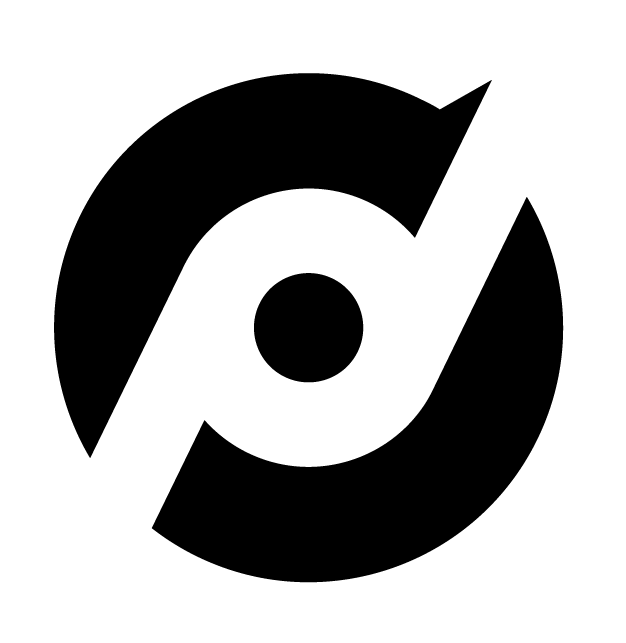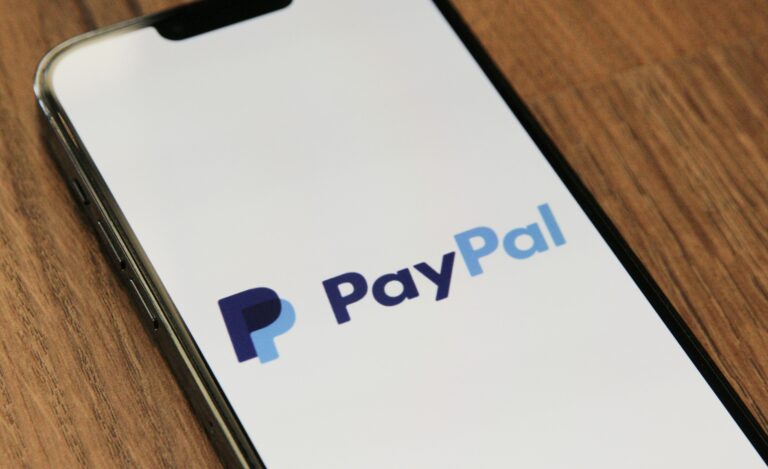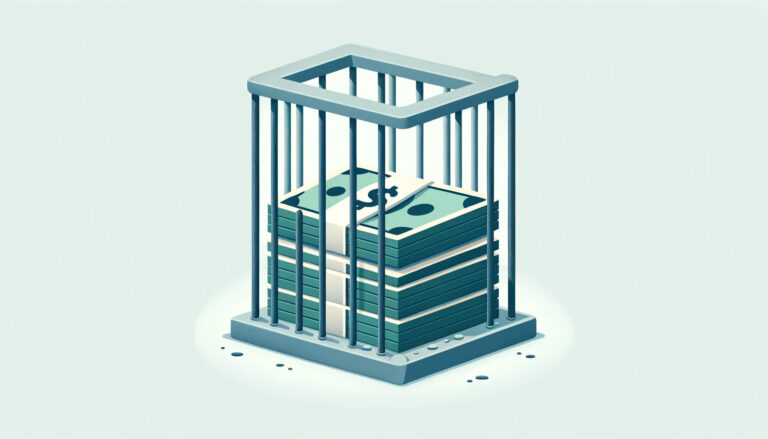Many businesses think the pricing page is the final step. Customers reach it knowing they want to make a purchase; they just haven’t chosen which level yet.
On the contrary, this page is not the final step. But it is a touchpoint in the customer’s journey. It serves as the moment where hesitation turns into action, showcasing value and guiding potential customers toward confident purchasing decisions.
A poorly designed pricing page can confuse visitors and drive them away, while a well-crafted one can boost conversions tenfold.
1. Keep the Layout Simple and Clean
A cluttered or overly complex layout can overwhelm visitors, leading to decision fatigue and ultimately driving them away. By keeping your design clean and straightforward, you make it easier for potential customers to focus on what matters: understanding your pricing and choosing the right plan.
Start by organizing your pricing tiers logically. Use a clear hierarchy that guides the eye naturally, such as arranging plans from least to most expensive or highlighting the most popular option.
Avoid cramming too much information into one space—stick to essential details like features, benefits, and costs. White space is your friend; it helps create a visual balance and improves readability.
A simple layout enhances the user experience in every way. Visitors are more likely to convert when they can quickly grasp your offerings without feeling overwhelmed.
Clarity drives confidence, and confident customers are more likely to click “Buy.”
2. Highlight the Best Plan
Highlighting the best plan on your pricing page is a powerful way to guide customer decisions and increase conversions. By leveraging psychological principles like the “decoy effect” and incorporating visual cues, you can make one plan stand out as the most appealing option.
The Decoy Effect
The decoy effect is a pricing strategy that subtly influences customer decisions by introducing a third, less attractive option (the “decoy”).
This decoy is designed to make your target plan—the one you want customers to choose—look like the best value. For example, if you offer three plans:
- Basic Plan: $25/month, limited features.
- Premium Plan: $45/month, all features included.
- Decoy Plan: $40/month, fewer features than the Premium Plan.
In this scenario, the Decoy Plan makes the Premium Plan appear significantly more valuable for just $5 more. Customers are nudged toward the Premium Plan because it feels like a “smart” choice.
Using Visual Cues to Emphasize the Best Plan
To draw attention to your recommended or most popular plan, use design elements strategically.
- Color and Contrast: Highlight the best plan with a distinct color or background that contrasts with the other options. For example, many pricing pages use bold colors like purple or green to make their featured plan stand out.
- Badges and Labels: Add badges such as “Most Popular,” “Best Value,” or “Recommended” to reinforce its appeal. Research shows that badges can increase conversion rates by up to 55%.
- Size and Positioning: Place the highlighted plan in the center of your pricing table or make it slightly larger than the others. This positioning naturally draws the eye and signals importance.
Practical Examples
Successful companies often employ these tactics effectively. Here are a few examples.
- Adobe Creative Cloud uses a high-priced “All Apps” plan as a decoy to make its mid-tier plan appear more reasonable and attractive.
- Webflow’s pricing page uses clean pricing cards with distinct colors and clear labels to emphasize their most popular plan, ensuring it grabs attention immediately.
By combining the decoy effect with thoughtful design choices, you can guide customers toward choosing your ideal pricing tier while making them feel confident about their decision.
ENHANCE YOUR CHECKOUT EXPERIENCE
3. Use Price Anchoring
Price anchoring is a psychological pricing strategy that uses a high initial price as a reference point to make other options appear more affordable.
This technique leverages the cognitive bias that causes customers to evaluate prices relative to the first one they see. It influences their perception of value and driving purchasing decisions.
How Price Anchoring Works
When customers encounter a high-priced option first, it sets an anchor that shapes their expectations. Subsequent prices are then viewed in comparison to this anchor, often making them seem like better deals.
For example, if a luxury product is priced at $1,000 and displayed alongside a mid-tier option at $500, the mid-tier option feels more reasonable—even if $500 is still a premium price.
This principle is rooted in consumer psychology and helps businesses frame their offerings in a way that encourages conversions.
Examples of Successful Price Anchoring
- Apple’s iPhone Pricing: Apple frequently uses price anchoring in its product launches. For instance, when Apple introduced the iPhone X at $999, it positioned this as the premium model. The high price anchored customer expectations, making other models like the iPhone 8 ($699) seem more affordable while still maintaining profitability.
- Steve Jobs’ iPad Launch: During the first iPad launch, Steve Jobs displayed an initial price of $999 before revealing the actual price of $499. This dramatic contrast made $499 feel like an incredible bargain, even though customers had no prior reference for what an iPad should cost.
- Hospitality Industry: Hotels often use anchoring by showcasing luxurious suites at premium prices. These high-end options make standard rooms seem more reasonably priced, encouraging customers to book rooms they might have otherwise considered expensive.
- Amazon’s Bundling Strategy: Amazon uses price anchoring with its “Frequently Bought Together” feature. By bundling products and showing individual prices alongside the discounted bundle price, Amazon creates an anchor that makes the bundle appear like a better deal.
CONNECT WITH A PROCESSOR THAT SCALES WITH YOU
4. Add a Free Trial or Freemium Option
Offering a free trial or freemium plan is one of the most effective ways to lower barriers to entry and encourage potential customers to engage with your product.
By allowing users to experience your offering without any upfront financial commitment, you eliminate hesitation. Don’t give customers a reason not to try your product.
Lowering Barriers to Entry
A free trial removes the risk of making a “bad purchase,” especially for customers unfamiliar with your product.
This strategy is particularly effective in industries like SaaS, streaming services, and fitness programs, where users often hesitate to commit without first testing the product.
For example, platforms like Netflix and Spotify use free trials to let users explore their features, creating habit-forming behavior that leads to paid subscriptions. Similarly, freemium models—offering a basic version of a product for free—help businesses attract a large user base by eliminating the cost barrier entirely.
Product Confidence
Free trials and freemium plans demonstrate confidence in your product’s value. By giving potential customers direct access, you allow them to experience its benefits firsthand, which builds credibility.
This approach also fosters a sense of ownership and emotional attachment, making users more likely to convert into paying customers once the trial ends.
For instance, Adobe Creative Cloud offers a 7-day free trial for tools like Photoshop, enabling users to integrate these products into their workflows. This hands-on experience often leads to long-term subscriptions.
Freemium models also nurture customer relationships over time. Users of the free version can gradually be upsold premium features once they recognize the added value.
Dropbox’s freemium model is a prime example. It attracted millions of users with a free plan while converting 1.6–4% into paying customers— a small percentage that still generated substantial revenue due to the large user base.
Additional Benefits
- Increased Conversion Rates: Free trials have higher conversion rates (10–25%) compared to freemium models (5%), as they showcase the full value of the product within a limited timeframe.
- Customer Feedback: Both models provide valuable insights into user behavior and preferences, helping refine your product for better adoption.
- Brand Awareness: Freemium options attract larger audiences, boosting visibility and word-of-mouth marketing.
Implementation Tips
For free trials, aim to offer full access for a limited time (e.g., 7–30 days) and provide onboarding materials to maximize user engagement.
For freemium plans, clearly differentiate between free and premium features while ensuring the free version delivers enough value to keep users engaged.
By offering a risk-free way for customers to explore your product, you not only increase conversions but also lay the foundation for lasting customer relationships. This strategy positions your business as trustworthy while giving customers the confidence they need to commit.
5. Use Social Proof
By showcasing the experiences of others and reducing perceived risks, these elements create a sense of reliability that encourages users to take action.
The Power of Social Proof
Social proof taps into the psychological phenomenon where individuals look to the actions or opinions of others to guide their own behavior. When potential customers see evidence that others have successfully used and benefited from your product, they are more likely to trust your brand and make a purchase.
Common forms of social proof include:
- Testimonials: Quotes from satisfied customers can highlight specific benefits and reinforce the value of your product or service. For example, SaaS companies often feature testimonials on their pricing pages to show how their tools solve real-world problems.
- Reviews and Ratings: Positive customer reviews and star ratings are among the most influential trust signals, with 82% of shoppers saying they increase their likelihood of purchasing. Displaying these prominently on your homepage or pricing page can reassure visitors about the quality of your offerings.
– Real-Time Activity: Features like “X people just signed up” or “Y purchases made today” leverage urgency and validation. This tactic is particularly effective during checkout to reduce last-minute doubts.
Trust Signals That Reduce Risk
While social proof builds credibility, trust signals directly address customer fears about making a purchase. These elements demonstrate your commitment to customer satisfaction and reduce perceived risks.
- Money-Back Guarantees: Offering a money-back guarantee shows confidence in your product and reassures customers that they won’t lose their investment if dissatisfied. Studies indicate that guarantees can boost conversions by 15–30% by eliminating hesitation.
- Security Badges: Displaying SSL certificates, payment security logos, or industry awards signals that transactions are safe and reliable.
- Partner Logos: Featuring logos of well-known brands that use your services enhances credibility by association.
Strategic Placement for Maximum Impact
To maximize the effectiveness of social proof and trust signals:
- Place testimonials and reviews on landing pages to make a strong first impression.
- Include ratings, reviews, or case studies on product pages to validate purchasing decisions.
- Display trust badges or guarantees on checkout pages to ease last-minute concerns.
With these methods, you can create an environment where potential customers feel confident about choosing your product. These strategies not only drive conversions but also foster long-term loyalty.
6. Make Plans Easy to Compare
When users can quickly understand the differences between your offerings, they are more likely to choose the plan that best fits their needs—and convert. Present your plans side-by-side with consistent formatting and a focus on highlighting each plan’s unique value.
Use Side-by-Side Tables for Clarity
Side-by-side comparison tables are one of the most effective ways to display pricing plans. They allow users to see all options at a glance, making it easier to compare features, benefits, and costs.
Here’s how to design an effective comparison table:
- Consistent Formatting: Use the same structure for each column or row in your table. For example, list features in the same order across all plans to avoid confusion.
- Highlight Key Differences: Focus on the features that differentiate your plans, such as storage limits, user access, or premium tools. Avoid overwhelming users with too many details—stick to what matters most.
- Readable Design: Use clean lines, ample white space, and legible fonts to ensure the table is easy to scan. Add subtle color coding or icons to emphasize distinctions without creating visual clutter.
Clearly Outline Each Plan’s Unique Value Proposition
Each pricing plan should communicate its specific value and target audience. To do this effectively, follow this 3-step guide:
- Descriptive Plan Names: Use intuitive names like “Starter,” “Pro,” or “Enterprise” that reflect the intended use case or customer segment.
- Feature Highlights: Include a brief description of who the plan is best suited for (e.g., “Perfect for small teams” or “Designed for growing businesses”) and call out standout features that justify the price.
- Call-to-Action (CTA): Pair each plan with a clear and actionable CTA like “Get Started” or “Try Now.” Ensure these buttons are visually distinct and aligned with the overall design.
Examples of Effective Comparisons
- Dropbox: Dropbox’s pricing page uses a clean side-by-side table with consistent formatting. Each plan highlights key features like storage size, sharing tools, and advanced security options. The most popular plan is emphasized with a badge and contrasting color.
- Shopify: Shopify’s pricing page includes a comparison table that clearly outlines what each plan offers, from transaction fees to advanced reporting tools. It also includes a recommendation for their most popular plan to guide users.
- Slack: Slack uses concise descriptions under each plan name to explain who it’s best suited for (e.g., small teams vs. large enterprises). The feature list is simple yet comprehensive, making it easy for users to compare.
Additional Tips
- Use tooltips or expandable sections for detailed explanations of complex features without cluttering the table.
- Incorporate visuals like checkmarks or icons to indicate included features versus unavailable ones.
- Highlight your most popular or recommended plan visually (e.g., using a different background color or a “Best Value” badge).
By presenting your pricing plans in an easy-to-compare format and clearly outlining their unique value propositions, you empower potential customers to identify with a package that resonates with their needs. This not only improves user experience but also increases conversions by reducing friction in the decision-making process.
TURN VISITORS INTO LIFETIME CUSTOMERS
7. Don’t Overcomplicate Pricing
Clear and transparent pricing is the cornerstone of building trust with your customers. When visitors land on your pricing page, they want to know exactly what they’re paying for and how much it will cost—without surprises.
Confusing or opaque pricing can lead to frustration, hesitation, and ultimately lost conversions. By presenting your pricing in a straightforward and honest way, you can instill confidence and encourage users to take action.
Why Transparency Matters
Customers are more likely to convert when they feel confident that there are no hidden fees or unexpected charges waiting for them. A lack of clarity can create doubt and cause potential buyers to abandon your site in search of competitors with simpler pricing structures.
Transparent pricing also reflects positively on your brand, signaling that you value honesty and customer satisfaction.
Key Elements of Clear Pricing
To ensure your pricing is easy to understand, follow these best practices:
- Display Costs Prominently: Make the price for each plan or product highly visible on your pricing page. Avoid burying costs in fine print or requiring users to click through multiple pages to find the information.
- Explain Billing Terms: Clearly state whether prices are billed monthly, annually, or as a one-time fee. If you offer discounts for annual billing, highlight the savings upfront (e.g., “Save 20% with annual billing”).
- Break Down Costs: For complex products or services, provide a breakdown of what’s included in the price. For example, if a subscription includes onboarding support or additional tools, list these benefits alongside the cost.
Avoid Hidden Fees and Complexity
Hidden fees or overly complicated pricing structures can erode trust and drive customers away. To avoid this:
- Be Upfront About Additional Costs: If there are extra fees (e.g., setup costs, add-ons, or overage charges), disclose them clearly on the pricing page. Use tooltips or expandable sections to provide details without cluttering the layout.
- Simplify Pricing Tiers: Avoid creating too many options that overwhelm users. Stick to three to four tiers with distinct differences in features and value.
- Use Plain Language: Avoid jargon or technical terms that might confuse visitors. Instead, use simple language that anyone can understand.
Examples of Transparent Pricing
- Slack: Slack’s pricing page is a model of clarity. It prominently displays costs per user per month and offers annual billing discounts with clear savings calculations. Each plan includes a concise breakdown of features.
- Zoom: Zoom’s pricing page avoids hidden fees by clearly stating what each plan includes (e.g., meeting duration limits) and any additional costs for optional upgrades like webinar hosting.
- Trello: Trello uses straightforward language to explain its free plan versus paid tiers, with no hidden charges or surprises.
Bonus Tips for Transparency
- Use visual aids like charts or tables to compare costs across plans.
- Include FAQs addressing common concerns about billing terms or potential fees.
- Offer a calculator tool if your pricing depends on usage (e.g., number of users or storage).
By prioritizing clear and transparent pricing, you reduce friction in the decision-making process. Customers appreciate honesty—and when they feel confident about what they’re paying for, they’re far more likely to convert into loyal buyers.
8. Test Your Pages
To maximize the performance of your pricing page, continuously test and optimize. By regularly analyzing user behavior and experimenting with different elements, you can identify what works best for your audience and steadily improve your conversion rates.
The Value of A/B Testing
A/B testing is one of the most effective methods for optimizing your pricing page. It involves testing two or more variations of a single element—such as layout, copy, colors, or calls-to-action (CTAs)—to determine which version performs better.
Here’s how A/B testing can help:
- Layout: Test different arrangements of pricing tiers to see which layout drives the most engagement.
- Copy: Experiment with headlines, plan descriptions, or CTA text to find the messaging that resonates most with your audience.
- Colors: Try different color schemes for buttons or highlighted plans to see which combinations draw more attention and clicks.
- CTAs: Test variations in wording (e.g., “Start Free Trial” vs. “Get Started Today”) and button design to optimize click-through rates.
For example, companies like Mailmunch and Unbounce have found that even small changes to CTAs or pricing layouts can result in significant conversion boosts. Testing these elements ensures that your page evolves based on real customer preferences rather than assumptions.
Using Heatmaps and Analytics Tools
In addition to A/B testing, heatmaps and analytics tools are invaluable for identifying areas of improvement on your pricing page. Heatmaps visually represent where users click, scroll, or hover, giving you insights into how they interact with your page.
Analytics tools provide deeper data on user behavior, such as bounce rates or time spent on specific sections.
Here’s how to use these tools effectively:
- Identify Drop-Off Points: Use heatmaps to locate areas where users lose interest or stop scrolling. For example, if users frequently abandon the page before reaching the CTA, you may need to adjust its placement or visibility.
- Analyze Click Behavior: Heatmaps can reveal which elements attract the most attention. If users are clicking on non-interactive elements (e.g., plan descriptions), consider making those areas clickable or providing more information.
- Track Performance Metrics: Analytics tools like Google Analytics or Mixpanel can help you monitor key metrics such as conversion rates, engagement levels, and user flow through the pricing page.
Tips for Continuous Pricing Page Optimization
- Test One Element at a Time: To ensure accurate results, focus on testing one variable at a time (e.g., button color) rather than multiple changes simultaneously.
- Set Clear Goals: Define what success looks like for each test—whether it’s higher click-through rates, increased sign-ups, or reduced bounce rates.
- Iterate Based on Data: Use insights from A/B tests and heatmaps to make incremental changes and continuously refine your page.
Examples of Success
Brands like Netflix and Spotify are known for their relentless optimization efforts. Netflix frequently tests CTA placement and plan descriptions to improve sign-up rates. Spotify uses heatmaps to refine its freemium-to-premium conversion funnel.
By embracing a culture of continuous testing and optimization, you can ensure that your pricing page remains effective in meeting customer needs and driving conversions. Small tweaks informed by data can lead to big wins over time!









